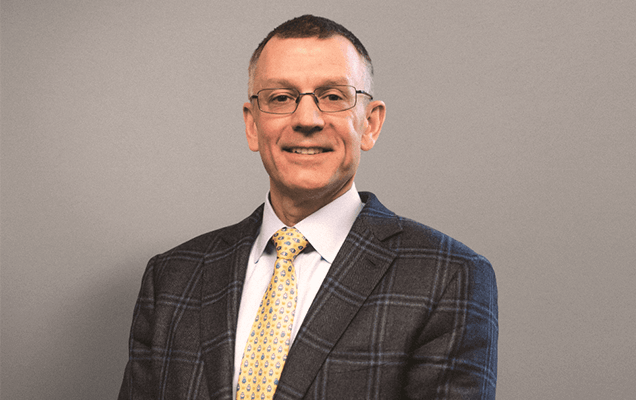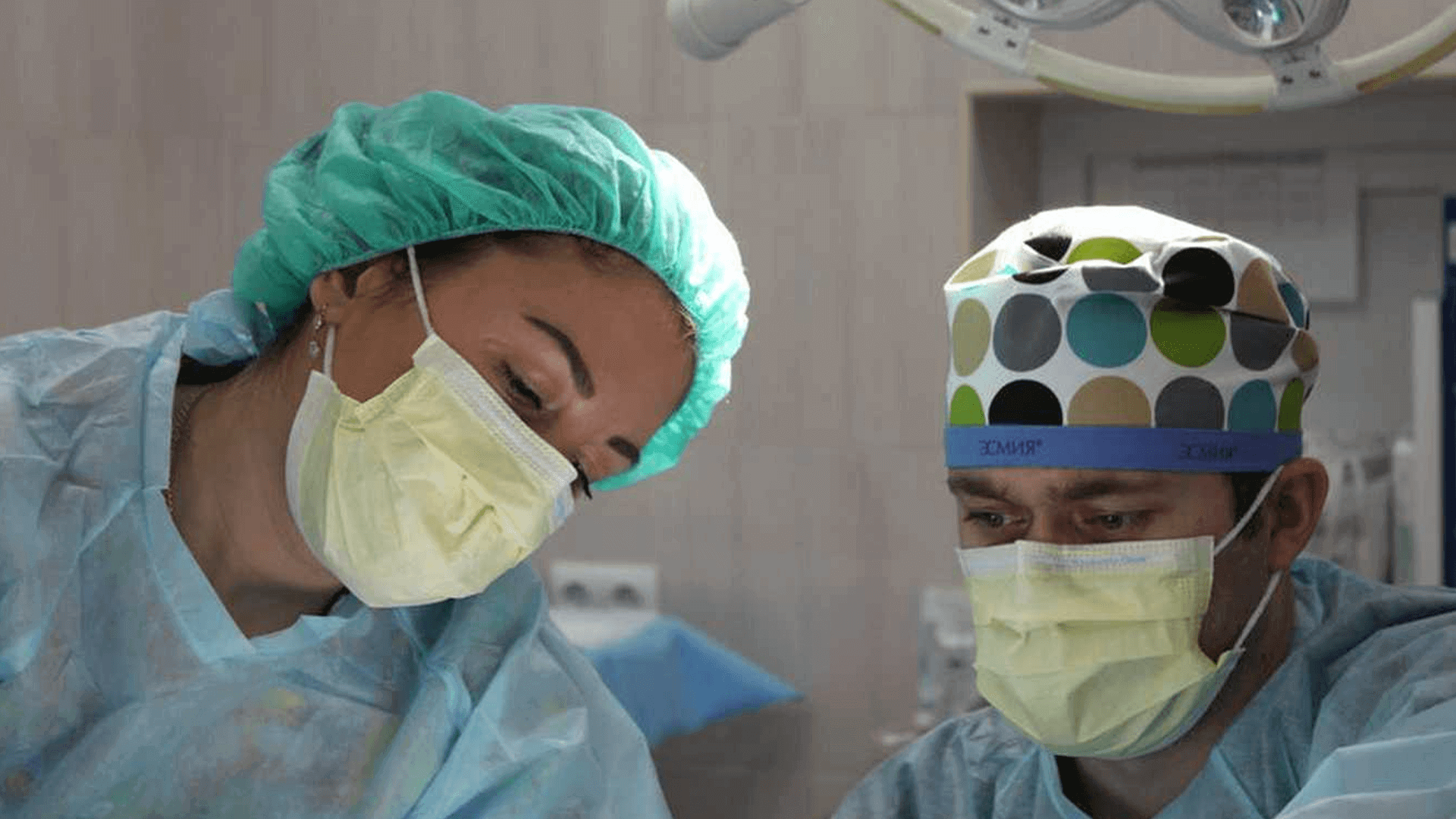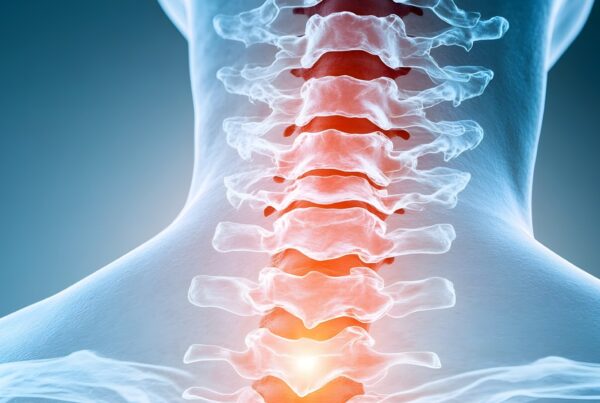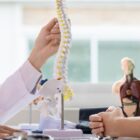If you have neck pain or arm complaints, a spinal specialist can help relieve your symptoms. It’s possible that a bone spur in the cervical spine can put pressure on nerves creating several problems.
Ignoring symptoms related to a bone spur within the neck can lead to a worsening of the condition. Keep reading to learn more about the treatment for cervical spine bone spurs.
Bone Spur in the Cervical Spine
The backbone (spine) has 33 bones (vertebrae). The cervical spine, or neck, is made of 7 vertebrae. The spinal cord sits in the spinal canal, the boney channel in the center of each vertebra. Between the vertebrae lie the gel-filled cushions, known as the intervertebral disc or disc, which act as shock absorbers and provide flexibility to the spine.
Along the back of the spine, between each pair of vertebrae, are a pair of joints, known as the facet joints. These joints provide stability and, along with the discs, make it possible for the spine to bend and twist in different directions.
Between the disc and facet joint is a channel that allows nerves to leave and enter the spinal canal and spinal cord, known as the foramen. These nerves are known as spinal nerves and supply specific areas of skin and muscles within our extremities, those from the neck supply the arms.
A “bone spur” is a small, boney growth that may develop as a normal process of aging. The growth of bone spurs is part of degenerative spine disease and typically takes a long time to develop. The formation of bone spurs is the body’s natural reaction to try and stabilize worn-out parts of your spine.
Bone spurs can develop from a worn-out disc or facet joint. Although a bone spur by itself may not be painful, the degenerated joint where they develop may lead to neck pain.
If the bone spur projects into the nerve channel, or foramen, symptoms can develop from pressure on the spinal nerve.
Medical Conditions Associated with Bone Spurs
The most common reason for bone spurs to form is aging.
By the time we are 60 years of age, over 50-70% of people will have some evidence of bone spurs on imaging of the neck. When the bone spurs narrow the nerve channel, foramen, the condition is known as spinal stenosis. You can think of the formation of bone spurs as arthritis or osteoarthritis of the spine. The presence of bone spurs is not by itself a concern. They are however a common cause of neck issues.
Signs and Symptoms of Cervical Foraminal Stenosis
Compression of a cervical nerve root compression can lead to a number of conditions:
- Neck or arm pain
- Arm or hand numbness or “pins and needles” feeling
- Arm or hand weakness
- Decrease or loss of arm and/or hand muscle tone
- Decrease or loss of hand, arm, and finger coordination
- Frequently dropping items
These issues can make it difficult to perform daily tasks such as using a computer, driving, and more.
What Is a Posterior Cervical Foraminotomy (PCF)?
PCF surgery treats bone spurs by enlarging or widening the nerve channel, the foramen. The clinical term is known as a foraminotomy.
This relieves nerve root compression. A PCF is performed from the back of the neck under general anesthesia.
This procedure doesn’t repair diseased joints. It is simply meant to decreases pressure on the nerve, reducing irritation, and relieve pain, numbness, and/or weakness.
Different Posterior Cervical Foraminotomy Procedures
There are several different approaches that your surgeon may select to perform a PCF. The following provides a brief overview.
-
Open Vs Minimally Invasive Surgery
Historically, spine surgeries required a large incision. This allowed the surgeon to see and perform the corrective procedure. The supportive muscles of the spine were dissected off in order to see the spinal bones. Once the spine was exposed, the surgeon then removed ligaments, discs, and bony materials to relieve nerve compression. The separation of the muscles from the spine was one of the sources of post-operative pain. The more muscle dissected, in general, the more post-operative pain a patient experienced.
-
Minimally Invasive Spinal Surgery
Minimally invasive surgeries are a more recent development that allows surgeons to perform the same operations through smaller incisions. Instead of dissecting muscle off the spine, the muscle fibers are separated to see the spine. A small tube is passed through the muscle and positioned over the spine with the assistance of X-ray guidance. This way the muscle’s attachments to the spine are left intact!
Specialized instruments and a microscope give a clear view of spinal structures. From this point, the procedure is similar to an open PCF, except the nerve is freed with less disruption of the spine’s supporting structures. This leads to less post-operative pain and a faster recovery.
What Happens After PCF?
After surgery, patients are taken to the recovery room but most get out of bed within one to two hours. For a PCF, no collar is required. Your surgeon will tell you to move your neck gently avoiding discomfort.
Most patients go home the same day or within 24 hours. Your doctor will provide specific instructions about how to increase your activity level. Often patients can drive within one to two weeks.
Some patients may return within a week or two after surgery. If your job involves heavy lifting or manual labor, you may need to a bit longer before returning.
Physical therapy is usually delayed until about 4 weeks after surgery, to allow your body to heal. If you have a neurological deficit, loss of sensation, or weakness that limits your function, you may need occupational therapy.
How Long Does PCF Recovery Take?
PCF recovery time varies from one person to the next. Most individuals should experience a significant degree of recovery in two to three months and return to their normal activities. Following your surgeon and therapist’s recommendations helps your recovery go smoothly.
How Successful Is a Foraminotomy?
The PCF success rate is very high. Arm pain will typically improve sooner than neurological issues such as weakness or numbness, which can take months. Numbness or weakness of the arms has the potential to be permanent, so contact your doctor immediately if you develop numbness or weakness of the arms.
PCF Complications
The complication rate of PCF surgery is very low. However, as with any surgery, there are potential issues that can develop after surgery:
- Surgical site infections
- Minor bleeding
- Leakage of spinal fluid, or a durotomy (accidental tear or puncture of nerve sack)
In the hands of an experienced spine surgeon, particularly one with experience with cervical spine surgery, these complications are extremely rare.
Are You Looking for Qualified Neurosurgeons to treat your Cervical Bone Spur?
The Neurosurgeons of New Jersey are ready to provide outstanding, patient-centered care.
Our surgeons and clinicians focus on the specific needs of each patient. Each patient’s unique characteristics are considered to create an individualized treatment plan that is best suited for that patient. Our surgeons are subspecialized in all areas of spinal surgery. Instead of trying to do “everything”, our surgeons have become “masters of their profession instead of a jack of all trades”.
If you have concerns or questions about cervical bone spurs, contact us today to schedule an appointment.

About Dr. Michael G. Kaiser
Dr. Michael G. Kaiser is a nationally recognized neurosurgeon in North Jersey and is a proud member of Neurosurgeons of New Jersey, practicing out of their Ridgewood office conveniently located on East Ridgewood Avenue. Dr. Kaiser specializes in complex and minimally invasive spine surgeries.
Recent Posts:
Please call today to schedule a consultation with me.
(551) 284-3265
Request a consultation with Dr. Kaiser






